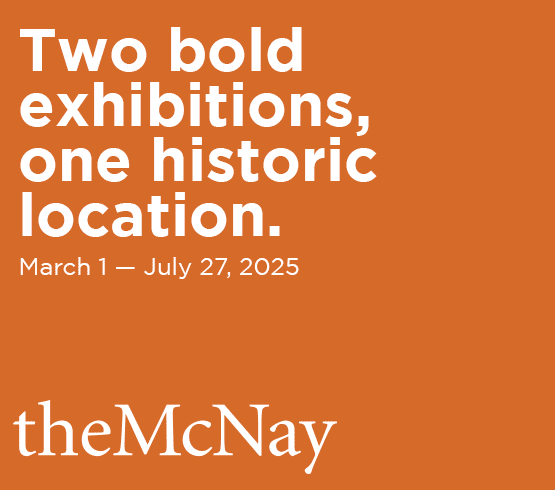In 2013, at the Dallas Museum of Art, Leigh Arnold curated Robert Smithson in Texas, a first of its kind look at the famous land artist’s finished and unfinished works in the state. Twenty-six objects, including drawings, photographs and media, documented the frequently impermanent works in rural areas. Among them is the 1973 Amarillo Ramp, completed posthumously by his widow, artist Nancy Holt, alongside friends Richard Serra and Tony Shafrazi.
“When talking with her, I got glimpses of her work against Smithson’s. But she kept focus on him and preserving and completing his work. That is, on the task at hand,” said Arnold, the associate curator at the Nasher Sculpture Center in Dallas. “I became fascinated with some of her lesser known work and believed she deserved recognition. I then started thinking about women artists,” she said.
Now, a decade later, Arnold gives women land artists their due with the exhibition Groundswell: Women Artists of Land Art, which runs through Jan. 7 at the Nasher Sculpture Center. Holt is among the seven artists, all women and all in the United States.
The struggle for the curator of a land art show is exhibiting what is no longer there. And, as some artists argue, was stolen and appropriated from indigenous people. But Arnold took cues from her 2013 show and the exhibits Earthworks at Dwan Gallery in New York in 1968 and Earth Art at the Herbert F. Johnson Museum of Art at Cornell University in 1969. While women were active in the movement, neither show featured women.
“Those two shows established how you do a land art show by contextualizing the works in a gallery setting,” she said. But Earth Art was a better reference because it included outdoor work and engaged with the landscapes.

1 ⁄5
Installation view
Groundswell: Women of Land Art
Nasher Sculpture Center
September 23, 2023 - January 7, 2024
Photo: Kevin Todora, courtesy of the Nasher Sculpture Center

2 ⁄5
Installation view
Groundswell: Women of Land Art
Nasher Sculpture Center
September 23, 2023 - January 7, 2024
Photo: Kevin Todora, courtesy of the Nasher Sculpture Center

3 ⁄5
Installation view
Groundswell: Women of Land Art
Nasher Sculpture Center
September 23, 2023 - January 7, 2024
Photo: Kevin Todora, courtesy of the Nasher Sculpture Center

4 ⁄5
Installation view
Groundswell: Women of Land Art
Nasher Sculpture Center
September 23, 2023 - January 7, 2024
Photo: Kevin Todora, courtesy of the Nasher Sculpture Center

5 ⁄5
Installation view
Groundswell: Women of Land Art
Nasher Sculpture Center
September 23, 2023 - January 7, 2024
Photo: Kevin Todora, courtesy of the Nasher Sculpture Center
Unable to produce the structure, instead a maquette of Alice Aycock’s aluminum and steel The Miraculating Machine in the Garden (1980) is displayed, alongside Holt’s repurposed Pipeline (1986). Here’s the activist kick: it was created in response to the Alaska Transatlantic pipeline, a gigantic steel and oil structure, from which oil drips. According to the Holt Smith Foundation, Holt was invited to Alaska to create something celebrating its beauty. “Holt was instead struck by the infiltration of the Trans-Alaskan Pipeline through pristine wilderness,” according to the foundation’s website.
Photographs of Mary Miss’s wooden Untitled (1973), , document the initial wooden slats above a hole in the ground on the Oberlin College campus. It was later recreated with steel and concrete. Meanwhile, Agnes Denes’s watercolor sketch series Isometric Systems in Isotropic Space create the impossible: placing the earth in unlikely places, such as a doughnut and snail.
That task is reinvented here. The piece involves deputizing an artist who interprets the buried stream on the tour. Whether from the perspective of an architecture critic (such as the Dallas Morning News architecture critic Mark Lamster) or a visual artist (Angél Faz), these tours present the flora and fauna buried beneath and around the stream. “You get a better sense of history. You’re asking, ‘what is buried in the name of progress?’” Arnold said.
Jody Pinto, another artist in the show, once said, “Land art is anything outside your environment.”
For Arnold, to recreate land art. “The goal is to not create archives but replicate the experience,” she said.
—JAMES RUSSELL





